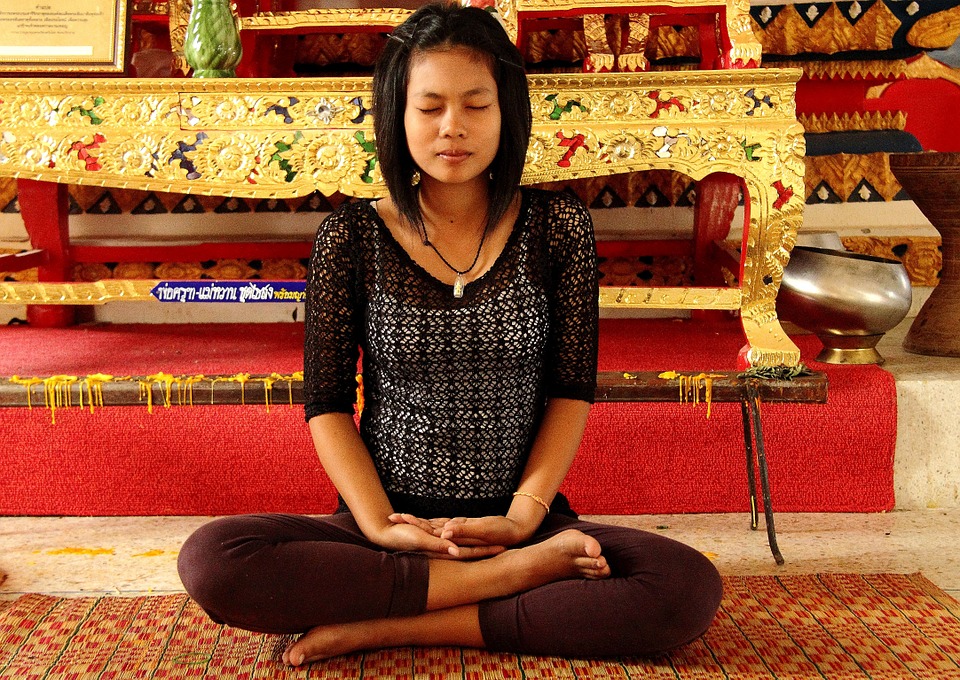Benefits of Ashtanga Yoga
Looking for information about Ashtanga Yoga? What are its origins? How is an Ashtanga Yoga class conducted? Do I need a specific mat to practice Ashtanga? In this article, I propose to answer all these questions about this style of yoga.
Ashtanga Yoga: a spiritual yoga?
I often imagine the place of yoga in everyday life in India. Why have we reduced yoga to a sporting activity when it seems so spiritual there? What could an Indian tell me about the true purpose of yoga according to him?
Ashtanga Yoga is certainly the style of yoga that most defines itself as a physical practice. To mobilize your abdominal muscles, to surpass yourself, to be rigorous... At first glance, it's hard to imagine that this style of yoga has a more spiritual dimension.
When practicing Ashtanga Yoga, you will be in the grip of difficulties. And you will learn that only by being gentle with yourself will you progress. You will reach states of deep consciousness, where your body will become a vehicle to be dragged from room to room.
In movement, your mind will learn to focus on the here and now. And you will reach an incredible state of concentration. But who can imagine what's behind Ashtanga Yoga, with all those drops of sweat, panting breaths and convoluted postures?
To find out more, let's discover together what this physical and dynamic practice contains....
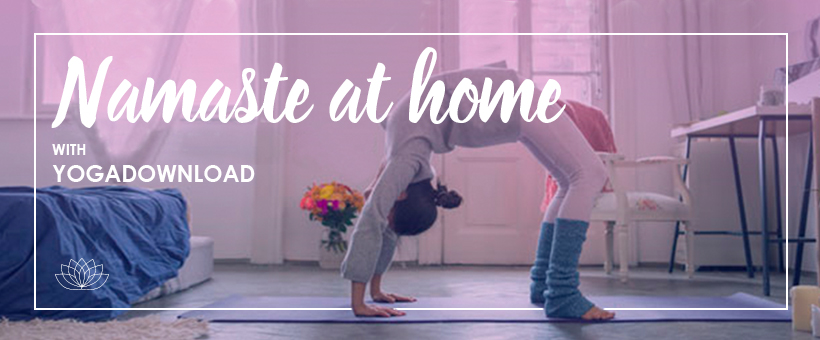
What are the origins of Ashtanga Yoga?
Ashtanga Yoga is a traditional style of yoga whose origin dates back to Shri K Pattabhi Jois.
Pattabhi Jois was born in 1915 in an Indian village in the Hassan district. For many years he was a student of Krishnamacharya, who is considered to be the father of modern yoga, as he contributed enormously to the evolution of postural yoga. Following his teachings, Pattabhi Jois opened his own yoga school: the Ashtanga Yoga Research Institute in Mysore, India. There he developed Ashtanga Yoga.
From then on, students came from all over the world to discover this style of yoga, especially from the 1960s onwards. This contributed to the spread of Ashtanga Yoga throughout the world. Pattabhi Jois passed away in 2009, but this style of yoga continues to develop. This, through the teachers he trained in India and the international seminars he gave throughout his life. Today it is his grandson, Sharath Chandra Rangaswamy, who has taken over the direction of his institute in Mysore.
Quote from Patthabi Jois:
"Yoga is not physical, (...) it can of course be used only as an external exercise, but that is not its real benefit. Yoga can go very deeply into a man's soul. When it is practiced in the right way, over a long period of time, the nervous system is purified, and thus the mind".
What is Ashtanga yoga?
Ashtanga is a dynamic form of yoga. To define it, we could say that its specificity is actually based on three principles:
- classified sequences of postures: we speak of Ashtanga series.
- a synchronization between breathing and movement, called Vinyasa.
- a special breath called Ujjay which means "victorious breath".
According to Pattabhi Jois, the greatest specificity of Ashtanga yoga is Vinyasa. It is not uncommon to call this yoga Ashtanga-Vinyasa-Yoga. But this style of yoga is different from Vinyasa Yoga, you will understand better why here.
Vinyasa is the coordination of breathing and body movements. For Jois, each yoga posture must be linked to a certain breathing (exhalation, inhalation). Breathing helps to avoid injury in the postures. It also aims to circulate energy throughout the body and to help the student regain consciousness in every part of the body.
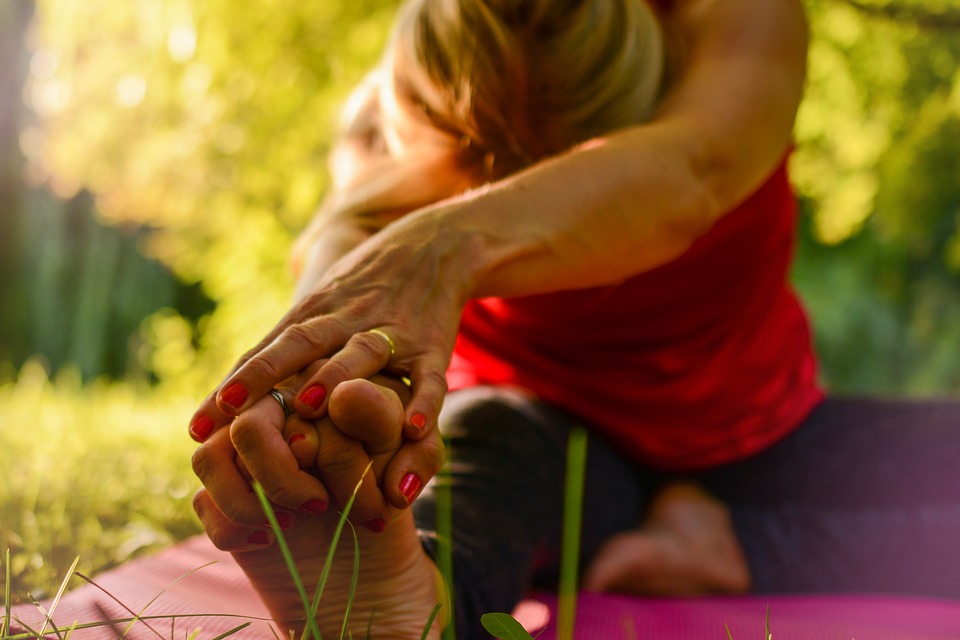
Breathing in Asthanga : Ujjay
The breath used in Ashtanga Yoga is the Ujjay or Ujjayi breath. It consists of forming a small, hoarse sound when exhaling, similar to the sound of waves.
Would you like to practice it for the first time? Then make yourself comfortable and breathe normally. Release every tension in your body with each exhalation. Then start breathing only through your nose with your mouth closed. This is the way it is practiced in Ashtanga and Vinyasa Yoga, breathing only through the nose. From here, place your tongue at the back of your mouth, as if you were moving it backwards. This will create a tension in the back of the throat and a sound will come out as you exhale. Try to keep this position of the tongue when inhaling and exhaling. There you go, practicing Ujjay.
If you have some difficulties or if you are not sure you understand, I advise you to ask your yoga teacher for information at your next class.
You can feel it for sure, this breathing is meant to warm up the body quickly, in order to provoke perspiration. Thus, it helps to purify the body, the nervous system and to cultivate positive energy. It allows the practitioners to have a more interior point of view on their body.
According to Pattabhi Jois, this breathing leads experienced practitioners to feel the energy circulating along their spine. However, such an awareness of prana (energy) would take years of practice. Finally, this breath also allows for better concentration during classes.
Ashtanga's series
This style of yoga is very different from all the others because it has a categorization to be respected. Indeed, Ashtanga Yoga consists of 6 series of postures that must be performed one after the other in a defined order. These series have an increasing difficulty. Thus, beginner practitioners will always focus on the first series before moving on to the next one. In other words, from the third series of Ashtanga, the postures seem impossible to realize for a normally constituted human being. But this is the beauty of the practice.
Each series is made up of about 80 determined postures that one will always come to perform in order.
For example, the first series of Ashtanga begins with 5 sun salutations A and 5 sun salutations B. Traditionally, we are not supposed to move on to the next series or posture until we have integrated all the previous postures, and to respect their correct alignment. It is therefore the teacher's role to determine when you can move to the next level.
Sound frustrating? It's a fundamental value of yoga: the important thing is not the end (having finished all the series) but the path. You will take great pleasure in seeing yourself evolve over the weeks of practice. Little by little, you will be able to follow the first series with greater ease, better balance and more accurate alignment. The posture will always remain the same, but each day you will see it in a different way.
All Ashtanga series are formed in the same way: sun salutations, standing postures, inverted sitting postures and then relaxation in shavasana.
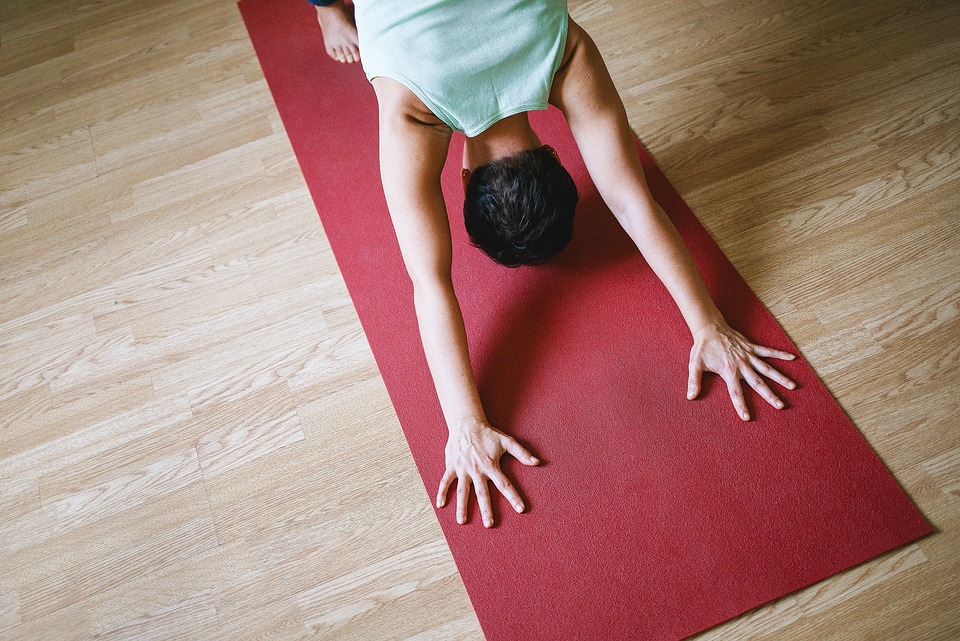
The benefits of Ashtanga Yoga
Ashtanga yoga is particularly physical because the postures follow each other at a very fast pace. This practice allows you to strengthen and tone your body but it is not its only use, of course. In Ashtanga, we consider that breathing and perspiration allow the body to release its toxins. Blood circulation is thus improved. The body feels lighter after practice. In addition, this demanding practice brings a real benefit to the mind which comes out soothed.
The regular practice of Ashtanga Yoga also increases concentration, flexibility, strength and balance. Finally, with this style of yoga, one also works on one's willpower. Because if you cannot move on to a higher series before mastering all the previous postures, you will have to hold on to create a practice routine and thus progress.
How is an Ashtanga Yoga class conducted?
In general, an Ashtanga class always opens with a mantra (a quote that is repeated aloud and can also be sung). Then the series of postures is practiced. At the end of the session, we take a moment to integrate the practice, in relaxation, then we close the session with a closing mantra.
This type of yoga is known for its dynamism. The postures follow one another with rhythm and fluidity. This, while keeping the attention on the breath.
Traditionally, Ashtanga yoga classes are practiced in the morning, early, before having a meal. This allows the mind to be unencumbered by the concerns of the day. Often, Ashtanga yoga practitioners practice 6 days a week.
As the days go by, you are led to practice in a totally different state of mind and body. One morning in great shape, the next day tired, the sixth day with a body full of aches and pains... This allows you to work on your body awareness and to observe your mind in the face of the difficulty of such a routine.
The practice of Ashtanga Yoga
Of course, it is not mandatory to practice every day to do Ashtanga. One indoor class every week will be enough to get started.
When you know a little bit more about your Ashtanga series, you can participate in a Mysore session. This is a special type of Ashtanga yoga class. In Mysore, each student advances in the series at his or her own pace, in silence. We only hear our own breathing and that of others, and we can concentrate fully on our practice. Somewhat disconcertingly, the teacher does not show the yoga positions in Mysore. He only puts the students back in their postures when needed. It is up to them to link the movements of the series they are working on.
But rest assured, in a more classical Ashtanga yoga class, your teacher will give you instructions on the different postures. Personally, I've attended Ashtanga yoga classes where the postures were not necessarily done in the order of the series, but I doubt that this is normally the case.
Initially, I had difficulty with Ashtanga yoga, which was far too military for me. However, the classes I was able to take have allowed me to make an incredible evolution in my practice. Indeed, they generally allow me to focus on a certain posture for a long time and to deepen it. One tries to understand all its specificities.
Indeed, Ashtanga is a practice where the postures are very precise. For example, we will pay great attention to the position of the hands or feet, toes and even the eyes (drichti). We want to "close the postures" in this practice. And that passes by the alignment of the limbs of the body, of the spine, but also by the position of the glance which follows the body in the movement. Moreover, if the gaze is focused on a point rather than fleeing all around you, it also helps to calm the mind.
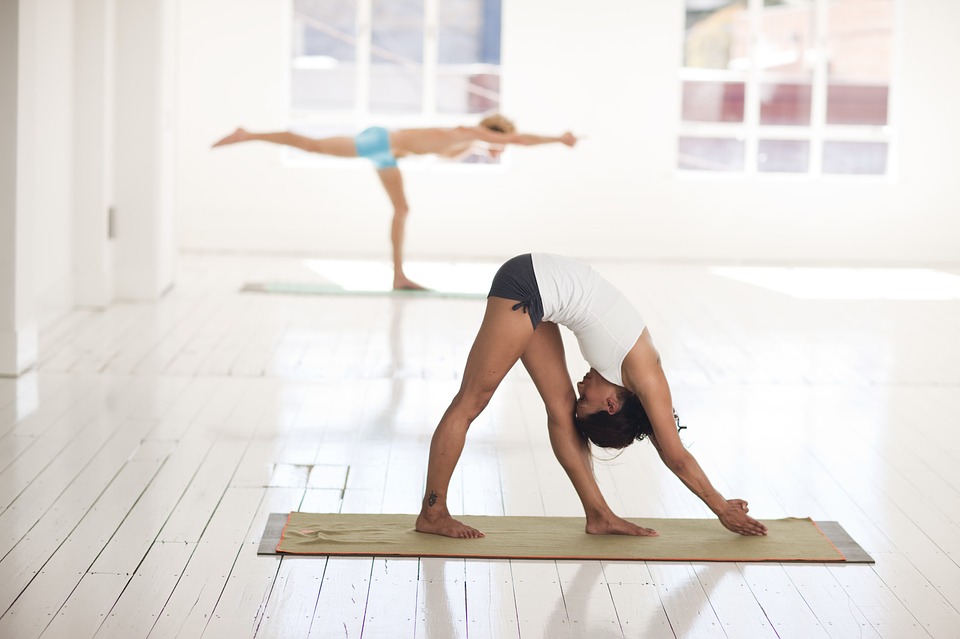
Who is Ashtanga Yoga for?
Ashtanga yoga is mainly for people in good physical condition, as it requires a lot of energy.
It allows to have a real physical activity through yoga. Moreover, it is not necessarily the style of yoga that you will practice to begin with. But that does not mean that it is impossible to practice it without knowing anything about yoga. If it's the class that makes you want to do it, go for it.
It will appeal to people who like to evolve within a certain framework, who appreciate rigor and routines.
Ashtanga requires precision in its practice. Each movement must be performed in a certain way. The position is determined from the gaze to the big toe. Therefore, it is an excellent way to perfectly understand the postures, which are also found in other styles of yoga. On the other hand, if you are looking for the comfort of a gentle yoga practice, it is not necessarily the right yoga to choose. In this case, we will turn to Hatha Yoga instead.
Equipment to practice Ashtanga Yoga
The choice of a mat for Ashtanga yoga is crucial for your practice. Indeed, a mat for Ashtanga yoga should be non-slip, comfortable and limit perspiration. The materials in which your mat is formulated should meet these criteria. This ecological rubber mat is for example dedicated to the practice of Ashtanga Yoga.

Raja Yoga or Ashtanga Yoga According to Patanjali
When looking for a definition of Ashtanga yoga, as a style of postural yoga, we sometimes come across Patanjali's definition of Ashtanga yoga. In this concept, yoga is not considered a physical activity. But as the philosophy of life to which the term refers above all. It is considered that yoga could be 2,000 to 3,000 years old and that it was transmitted to man to enable him to forget the suffering of life on earth. For this reason, postural yoga is based on great principles. It is what is called Raja yoga or Ashtanga yoga. This term actually means "yoga with eight limbs". Raja-Yoga is explained in the Yoga Sutras of Patanjali. This book is a seminal work in the philosophy of yoga.
The goal of Raja Yoga is to achieve liberation. For this, we identify eight principles to put in place in our lives:
• yama: how I behave towards others, which includes the notion of ahimsa, non-violence and satya, the truth.
• niyama: my relationship towards myself, which includes the notion of samtosa, which means to be content with little and sauca, purity.
• asana: finding calm in the posture, which includes the practice of postural yoga.
• pranayama: the control of breath and energy, which consists in using one's breath to circulate vital energy.
• pratyahara: withdrawal of meaning, the first step in meditation.
• dharana: concentration.
• dhyana: meditation, the mind is no longer sensitive to disturbances.
• samadhi: the realization, the state of union with the inner god (atman).
Raja yoga thus includes a much higher dimension than the practice of postural yoga. Its objective is to reorient the mind, which is often scattered and subject to fluctuating states. This must be done without self-judgment and without causing conflicts in the personality. To do this, it is never a question of fighting the mind or denying the thoughts that obsess us, but simply observing them. This is the first path to meditation.
Ashtanga Yoga according to Pattabhi Jois and Patanjali
So you understand that originally Ashtanga Yoga was very different from the simple physical practice it evokes today in the West.
The name given to the style of yoga created by Pattabhi Jois has sometimes been debated. The reason? It seems to encompass only some of the eight principles of yoga described by Patanjali. Nevertheless, Pattabhi Jois would have voluntarily chosen this reference to bring a deeper and more spiritual dimension to this practice. This, while knowing that a regular practice of yoga can, according to him, allow him to reach a spiritual fulfillment.
You now have all possible information about Ashtanga Yoga. Of course, this article couldn't accurately describe all the aspects of this style of yoga, which are certainly beyond me for some. The best way to become familiar with Ashtanga Yoga will therefore be to attend a class. You will then be able to understand this practice more easily.


